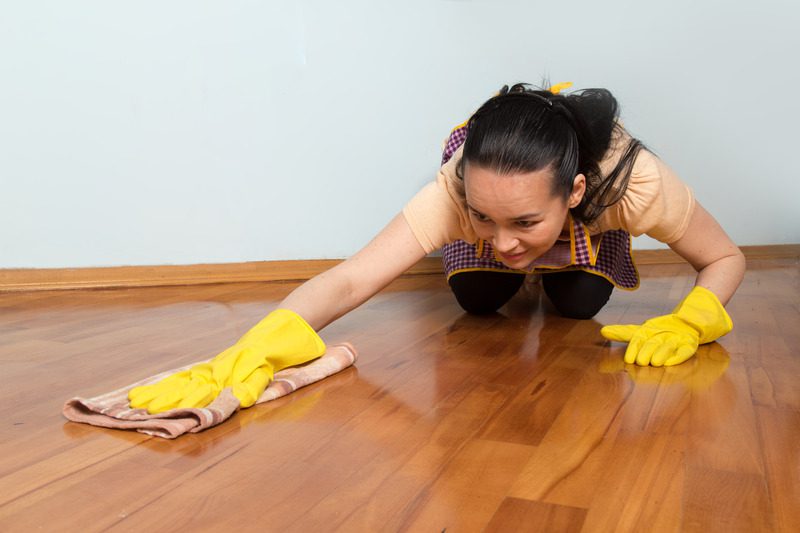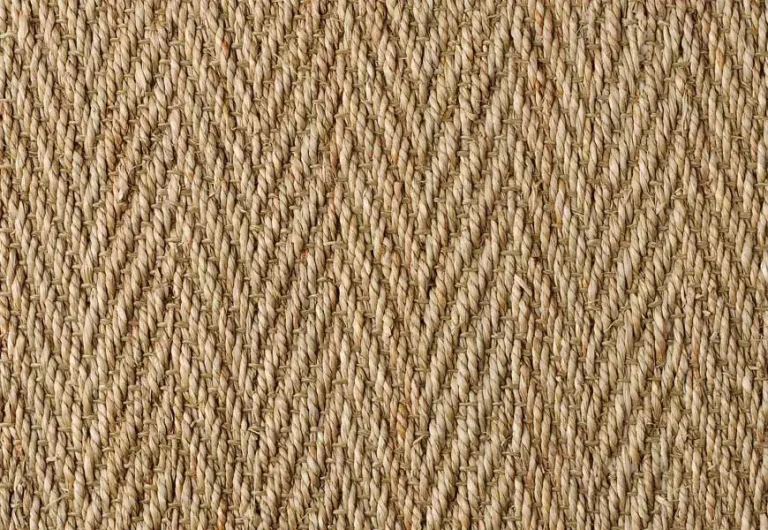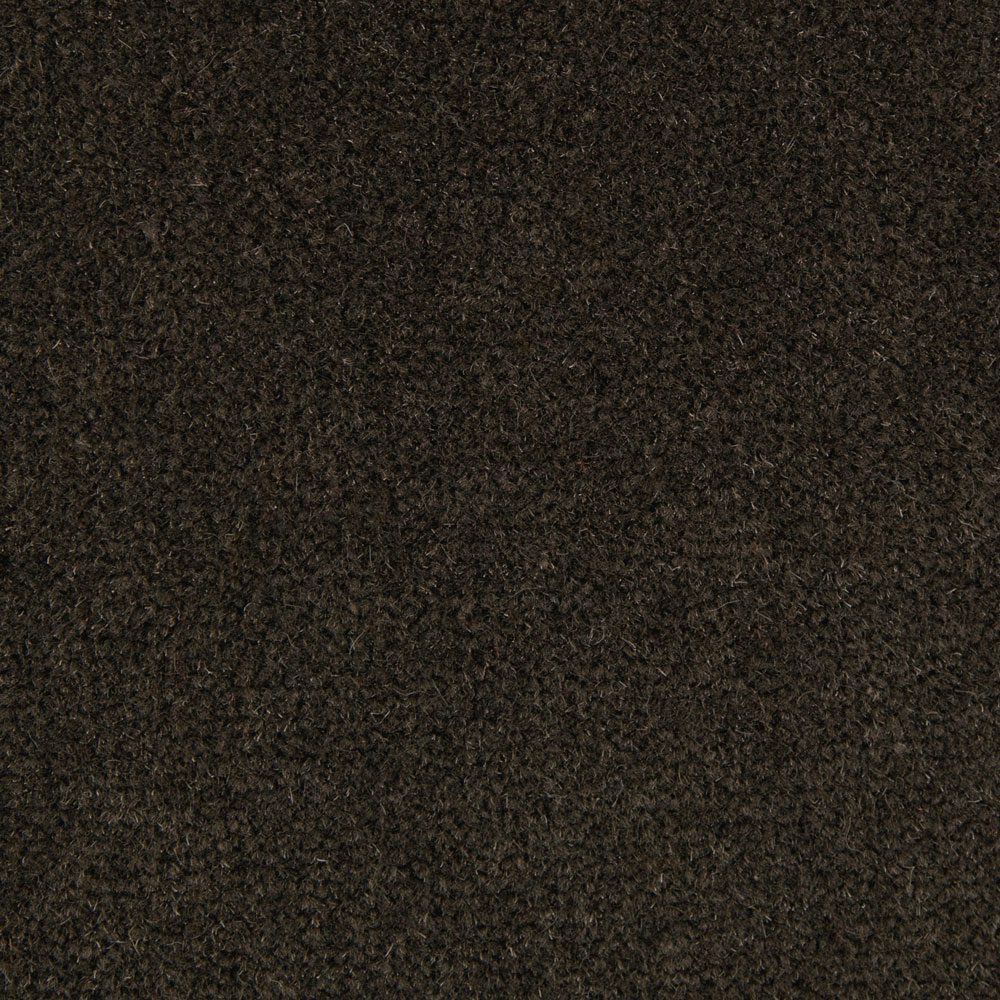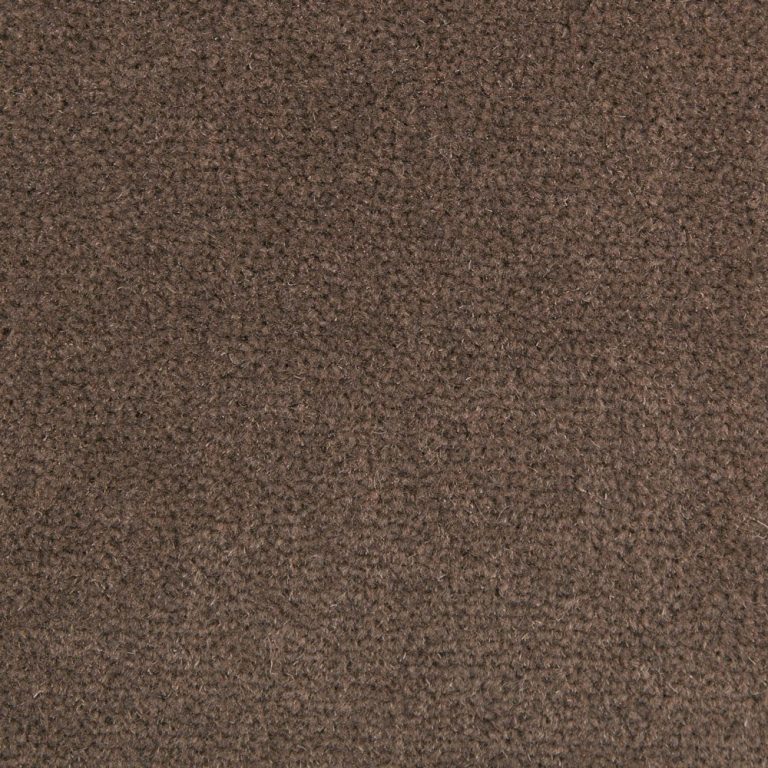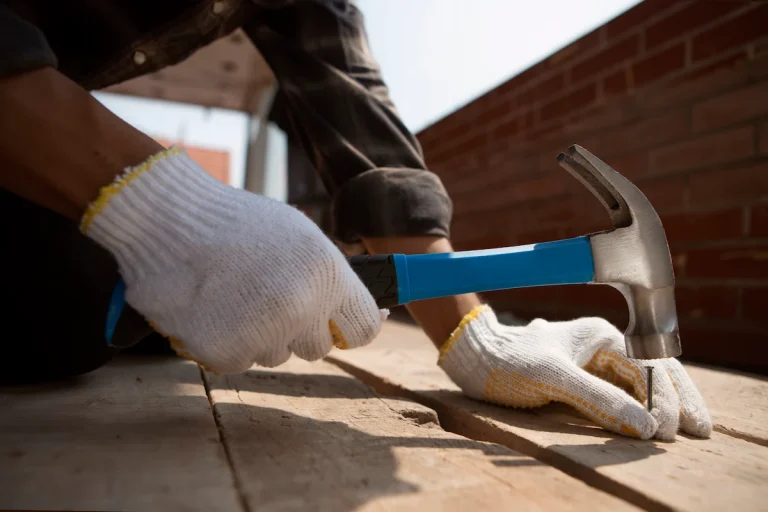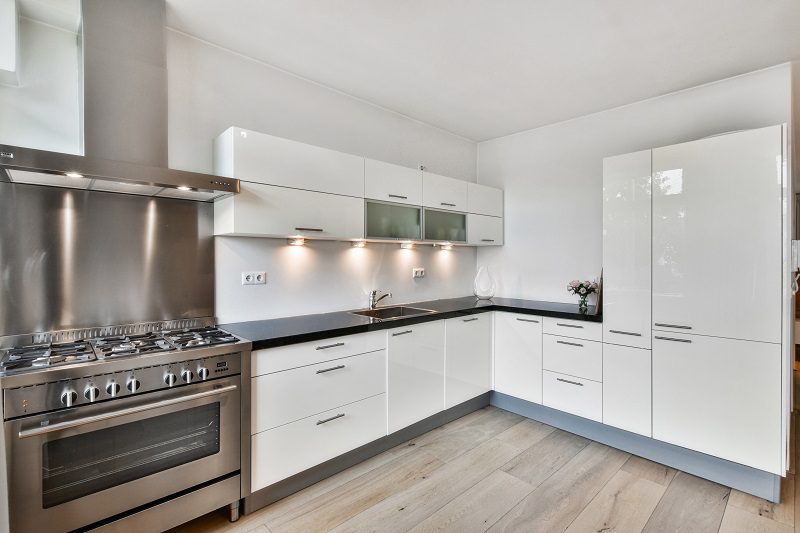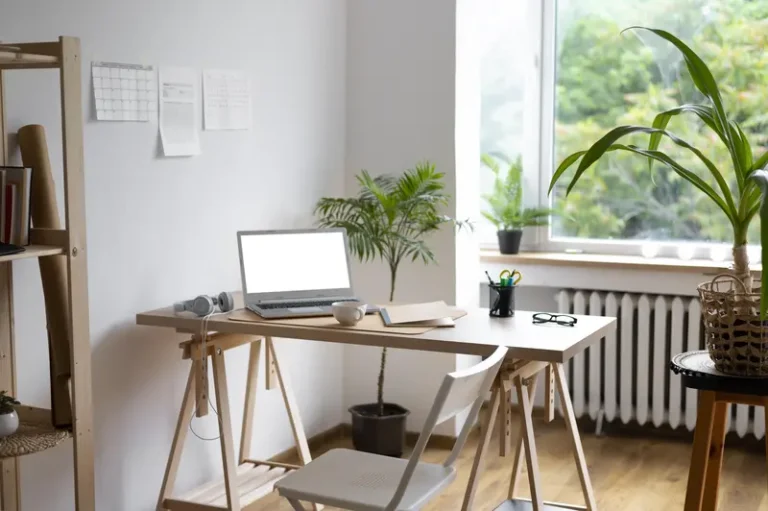If you have engineered wood floors in your home, you know how important it is to keep them clean and well-maintained. But with so many different cleaning methods and products on the market, it can be difficult to find how to clean engineered wood floors. In this article, we’ll cover everything you need to know about cleaning engineered wood floors. This includes the tools and materials you’ll need, step-by-step cleaning instructions, and some helpful tips for maintaining clean and beautiful floors. So, let’s get started!
Key Takeaways:
This is how do you clean engineered wood floors: 1. Regular maintenance is crucial for keeping engineered wood floors clean and looking new. 2. Sweep or vacuum frequently and use a gentle, wood floor cleaner for mopping. 3. Prevent damage by wiping up spills immediately, using furniture pads, and avoiding harsh chemicals.
What Are Engineered Wood Floors?
Engineered wood floors are a type of hardwood flooring made up of multiple layers of wood or plywood, topped with a layer of hardwood veneer.
This construction allows engineered wood floors to be more dimensionally stable than solid wood floors, making them suitable for areas with fluctuating humidity and temperature levels. Their multi-layered composition enhances their resistance to moisture and warping, making them a popular choice for below-ground installations and concrete subfloors.
The hardwood veneer layer provides the authentic look and feel of traditional hardwood, offering a wide range of styles, colours, and finishes to suit various interior designs. Engineered wood floors seamlessly blend the warmth and elegance of hardwood with enhanced durability, making them ideal for high-traffic areas in residential and commercial spaces.
Why do Engineered Wood Floors Need to be Cleaned?
Regular cleaning of engineered wood floors is essential to remove dirt, and stains, and maintain their appearance and structural integrity over time.
Engineered wood floors offer a beautiful, durable, and versatile flooring option for homes and commercial spaces. The cleaning process involves a delicate balance – thorough enough to remove dirt and stains, yet gentle enough to preserve the wood’s natural beauty.
Finding the best way to keep engineered wood floors clean helps maintain the lustre and character of the wood, ensuring your floor continues to enhance the aesthetic appeal of your room.
Tools and Materials Are Needed for Cleaning Engineered Wood Floors
When it comes to how to clean engineered wood floors, we can’t miss the discussion about the tools and materials needed.
To clean engineered wood floors, you will need a combination of tools and materials, including a broom or vacuum cleaner, a microfibre mop, a mild wood floor cleaner, warm water, a soft cloth, and a bucket.
These tools and materials are essential for efficiently maintaining the pristine condition of engineered wood floors.
Let’s start with the broom or vacuum cleaner, which is crucial for removing loose dirt and debris from the surface. The microfibre mop is gentle yet effective in capturing dust and small particles without causing scratches.
Regarding mild wood floor cleaners, it’s vital to choose a product specifically formulated for engineered wood to avoid damaging its protective layers. Warm water combined with the soft cloth provides a gentle yet thorough cleaning solution, while the bucket serves as a convenient container for diluting the cleaner. These items are critical for regular maintenance and fostering the longevity of engineered wood floors.
a. Broom or Vacuum Cleaner
Using a broom or vacuum cleaner is the first step in removing dirt and debris from engineered wood floors. Regular sweeping or vacuuming is crucial to prevent dirt and debris from accumulating and causing scratches or damage to your beautiful wood flooring.
High-traffic areas are particularly prone to collecting more dirt and grit, which can wear down the finish over time. By using a broom or vacuum cleaner, you not only maintain the appearance of your floors but also improve indoor air quality. Regular cleaning removes allergens and dust, creating a healthier environment for your family.
b. Microfibre Mop
If you are wondering how to polish engineered hardwood floors, then make sure to have a microfibre mop.
A microfibre mop is an essential tool for applying the cleaning solution and addressing stubborn stains on engineered wood floors.
Regarding cleaning engineered wood floors, using a microfibre mop is highly recommended. This type of mop allows for precise application of the cleaning solution, ensuring complete coverage without leaving behind any excess moisture that could potentially harm the wood.
The absorbent and gentle nature of microfibre makes it perfect for lifting and removing tough stains without causing any scratches or abrasions on the surface. Additionally, the electrostatic properties of the mop attract and trap dust and debris, giving your floors a thorough and effective cleaning.
c. Gentle Wood Floor Cleaner
A gentle wood floor cleaner is essential to effectively wash engineered wood floors without compromising the floor’s protective layer.
Using a mild wood floor cleaner helps to preserve the natural beauty of the wood while removing dirt, grime, and stains.
Its gentle formula ensures that it does not strip away the protective finish or cause any damage to the wood surface.
The gentle cleaning properties of a mild wood floor cleaner make it suitable for regular maintenance without causing any harm to the wood.
d. Warm Water
Warm water is an essential component of the cleaning solution for mopping engineered wood floors. It aids in effectively removing dirt and grime.
The elevated temperature of warm water serves as a powerful agent, breaking down and dissolving stubborn dirt and grime. This makes it easier to remove during the mopping process.
Additionally, warm water can enhance the performance of the cleaning agents in the solution, resulting in a more thorough clean for your engineered wood floors.
e. Soft Cloth
A soft cloth is employed for drying the floor after cleaning and for gentle polishing to maintain the floor’s lustre.
When drying the floor, using a soft cloth is highly effective in absorbing excess moisture. This not only prevents water damage but also promotes a quicker drying process.
In addition, the smooth texture of the cloth is perfect for gentle polishing. It evenly distributes the polishing agent, enhancing the floor’s shine without causing any scratches or abrasions.
This multifunctional tool is a valuable asset in the cleaning process. It aids in both practical drying and careful maintenance, contributing to the overall cleanliness and appeal of the surfaces it touches.
f. Bucket
A bucket is essential for mixing the cleaning solution and ensuring convenient application during the cleaning process for engineered wood floors.
Using a bucket has several benefits when cleaning wood floors. Firstly, it allows for accurate measurement and mixing of the appropriate amount of cleaning solution for the specific floor type. This ensures the effectiveness of the cleaning process and prevents any wastage of solution.
In addition, the bucket makes it easy to dip the mop or cloth into the prepared solution, facilitating the application of the cleaning agent onto the floors. The sturdy handle of the bucket also provides a reliable grip, making it comfortable to carry around while cleaning different areas of the floor.
How to Clean Engineered Wood Floors
Cleaning engineered wood floors involves a systematic process including sweeping or vacuuming, preparing the cleaning solution, mopping, and ensuring thorough drying for polishing. The following is an explanation of how to clean engineered wood floors.
To start, remove dirt and debris by sweeping with a soft-bristle broom or using a vacuum with a floor brush attachment.
Next, prepare a gentle cleaning solution using a mix of water and wood floor cleaner, ensuring it’s suitable for engineered wood.
Then, mop the floor using a damp but not soaking wet mop, moving in the direction of the wood grain to avoid streaking or water damage.
Once mopping is complete, allow the floor to fully dry before applying a quality wood floor polish to enhance its shine and protect the surface.
a. Sweep or Vacuum the Floor
The first step in cleaning engineered wood floors is to sweep or vacuum the floor to remove dirt, and debris, and prevent scratches from abrasive particles.
Thorough sweeping or vacuuming is crucial for maintaining the beauty and longevity of engineered wood floors. Dirt and debris can act like sandpaper, causing scratches and dulling the finish over time. Regular removal of these particles helps to preserve the floor’s integrity, preventing costly repairs or refinishing.
A clean floor provides a healthier indoor environment by eliminating allergens and bacteria that can accumulate in the dirt. By incorporating sweeping or vacuuming into your cleaning routine, you can enjoy a pristine and inviting living space for years to come.
b. Prepare the Cleaning Solution
Preparing a cleaning solution using mild wood floor cleaner, warm water, and optional vinegar is essential for effective and gentle cleaning of engineered wood floors.
To create the cleaning solution, start by filling a bucket with warm water.
Next, add the recommended amount of the wood floor cleaner as indicated on the product label.
If you prefer to use vinegar, a quarter cup of white vinegar can be added to the mixture to enhance its cleaning properties.
After combining the ingredients, gently stir the solution to ensure it is well-mixed.
This carefully prepared solution is vital as it effectively cleans the engineered wood floors without causing any damage to the delicate surface.
c. Mop the Floor
Mopping the floor with the prepared cleaning solution is a critical step to address stains and ensure comprehensive cleaning of engineered wood floors.
When mopping engineered wood floors, it’s essential to identify the type of stains to utilise the most effective cleaning agent.
For example, for grease stains, using a mixture of warm water and mild dish soap can be highly beneficial. Incorporating white vinegar in the cleaning solution can help in tackling tough stains like pet accidents or wine spills.
The motion of mopping plays a crucial role. Using a figure-eight motion rather than a traditional back-and-forth movement is advisable to prevent streaks and water damage on the floor.
Paying attention to the drying process after mopping is equally important to ensure the floor’s longevity.
d. Dry the Floor
Thoroughly drying the floor after mopping is crucial in preventing moisture-related issues and preparing the surface for polishing and maintenance.
When the floor is not completely dried, it can lead to mould and mildew growth, which can cause health hazards and damage to the flooring material.
Excess moisture can compromise the adhesive used for installing the flooring, leading to potential detachment or warping. Proper drying also sets the stage for the next steps in floor care, such as polishing and sealing, ensuring a long-lasting and attractive finish.
Tips for Maintaining Clean Engineered Wood Floors
Maintaining clean engineered wood floors involves proactive measures such as immediate spill clean-up, furniture pad usage, avoidance of strong chemicals, regular sweeping or hoovering, and strategic placement of rugs or mats in high-traffic areas.
It’s essential to mop up spills promptly to prevent them from seeping into the wood. Using pads or glides under furniture legs can help reduce scratches and dents caused by movement.
Avoiding strong chemicals and opting for specific engineered wood floor cleaners will preserve the floor’s finish and appearance. Regularly sweeping or hoovering not only removes dirt and debris but also prevents scratches caused by their abrasive action.
Placing rugs or mats in high-traffic areas can effectively minimise the amount of grit and dirt that reach the floor, thereby reducing wear and tear.
a. Clean Up Spills Immediately
Immediate clean-up of spills is essential for preventing moisture-related issues and stains, contributing to the overall maintenance of clean engineered wood floors.
When spills are left unattended, the moisture can seep into the wood, causing warping or discolouration. The longer a spill sits, the more likely it is to leave a stubborn stain that requires additional effort to remove.
Regular and prompt spill clean-up not only preserves the aesthetic appeal of the floor but also protects its structural integrity. It is a crucial aspect of floor care that shouldn’t be overlooked. Consistent upkeep can enhance the lifespan of the flooring and reduce the need for extensive repairs down the line.
b. Use Furniture Pads
Utilising furniture pads protects against scratches and dents, preserving the pristine condition of engineered wood floors.
By placing furniture pads under tables, chairs, and heavy furniture, you can effectively minimise the risk of unsightly marks and scratches on your engineered wood floors. Whether it’s for a residential or commercial space, these pads are essential in maintaining the aesthetic appeal and value of your flooring. Furniture pads also contribute to reducing noise caused by moving furniture, making them a practical and considerate investment for any space.
c. Avoid Harsh Chemicals
Avoiding the use of harsh chemicals can help safeguard the protective finish of engineered wood floors. This not only ensures their longevity but also maintains their visual appeal.
By steering clear of harsh chemicals, individuals can preserve the protective layer of their engineered wood floors. This prevents premature wear and damage, keeping the floors in top condition for longer.
The absence of harsh chemicals also contributes to maintaining the natural lustre and beauty of the floors. This enhances the overall aesthetic appeal of the living space. Additionally, this conscious decision promotes a healthier indoor environment by minimising the release of harmful toxins commonly found in chemical cleaners.
d. Regularly Sweep or Vacuum
Regular sweeping or vacuuming prevents the accumulation of dirt and debris, contributing to the ongoing maintenance and cleanliness of engineered wood floors.
This consistent maintenance routine not only removes visible dirt and dust but also prevents particles from settling into the crevices or textures of the wood, preserving its natural beauty and longevity.
By regularly removing debris and dirt, you can safeguard against scratches and wear, ultimately reducing the need for deep cleaning or repairs.
Maintaining a clean floor surface enhances indoor air quality and creates a welcoming environment for residents and guests alike.
e. Use Rugs or Mats in High-Traffic Areas
Strategically placing rugs or mats in high-traffic areas offers protection against scratches and minimises wear, preserving the integrity of engineered wood floors.
By strategically positioning rugs or mats in areas prone to heavy foot traffic, one can effectively shield the underlying flooring from the detrimental effects of constant use.
They help in reducing the accumulation of dirt and debris, thereby enhancing the overall cleanliness of the space. These protective coverings also contribute to creating defined pathways and zones, promoting an organised and visually appealing environment while extending the longevity of the flooring material.
That’s the full explanation of how to clean engineered wood floors. Keep in mind, it is also important to choose quality engineered wood floors so that they do not get dirty quickly.
Get a variety of engineered wood floors made from high-quality materials only at TEKA Flooring. For many years, TEKA Flooring has always been committed to providing various types of flooring options, including engineered wood floors, with high quality and affordable prices.
You can also consult further with TEKA Flooring’s expert team for expert advice and in store offers.
Read also: Engineered Wood Flooring VS Laminate: Which One Is The Best?


























